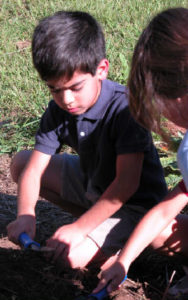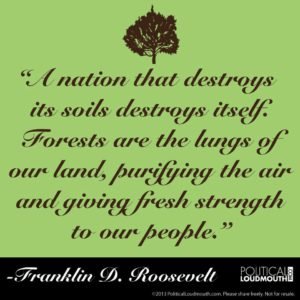
The SOIL
I don’t know of a single kid that isn’t crazy over digging in the dirt! Just put a shovel in hand and you will be surprised. Ask kids questions to see what they know about soil. The two groups of living things are plants and animals. The oldest living thing on Earth is a tree. The largest living thing on earth is a tree. A lot of our food comes from trees. Organic means coming from living things. Organic chemistry is the chemistry of living things. Organic gardening is gardening naturally without poisons. The chemistry of living things is based on the element carbon. Carbon under great pressure produces the diamond. I like this element!
Everything in the universe is made of elements. Over 100 different elements have been identified. Elements are made in stars. “You are just a little bit of stardust!” Name some elements: iron, tin, copper, gold, silver, calcium, oxygen, hydrogen, phosphorous, mercury, carbon. Your body needs nutrition that has certain elements to grow healthy. Plants get these elements from good rich soil. We get most of these elements from plants, our food.
There are many different kinds of soil: Clay, sand, silt, loam. What makes soil? Discussion. The richest soil is made from things that were once alive: leaves, fruits, fallen trees and limbs, dead animals, bone, eggshells. There are many colors of soil. Sand may be shades of orange, white, gray, black or pink. Clay may be red, orange, gray, or white, but the best soil for growing plants is rich dark black loam, which comes mostly from living things. People call it “Black Gold”. It stays soft enough for young roots to grow, holds water, and is rich with nutrients that plants need to grow healthy. Let kids examine and feel soil samples.
Pour water through 3 bottles of different kinds of soil that have holes in the bottom and measure the uptake of water from each. Discuss composting and feeding the soil with raw food scraps and eggshells from kitchen.
Examine worms. Worms are important to composting soil. Worms have 5 hearts, a brain with two tiny lobes and a long spinal chord. It is divided into segments, has no bones but moves using muscles and very tiny hairs that are on each segment. They breath through their skin and it needs to stay moist for them stay alive.
Materials: Chart of the elements, samples of different colors and types of soil, bowls of different soil types, water bottles for making sedimentators, container of worms, 3 plastic bottles with holes punched in the bottom for drainage.
Activities: Examine and feel soil samples. Observe worms. Make sedimentators. Go for a walk and collect different types of soil in a bottle about 1/2 full( you may want to have some soil with you in case there is no sand or clay) Have kids fill bottle the rest of the way with water, shake up, and then set aside to see how it settles out. Fill a plastic bottle with sand, one with clay and one loam. Bottles should have a few holes in bottom close together. Pour 1 cup of water in each bottle; collect from the bottom and measure to see which one absorbs the most water.
Children love the song “Dirt Made My Lunch”!
Soil mixed with straw and water will, with the sun’s help, harden into bricks. You can also mix mud with spanish moss. Try turning mudpies into houses! Besides the fun of mud play, children learn about evaporation, building construction and the creative use of natural resources!

